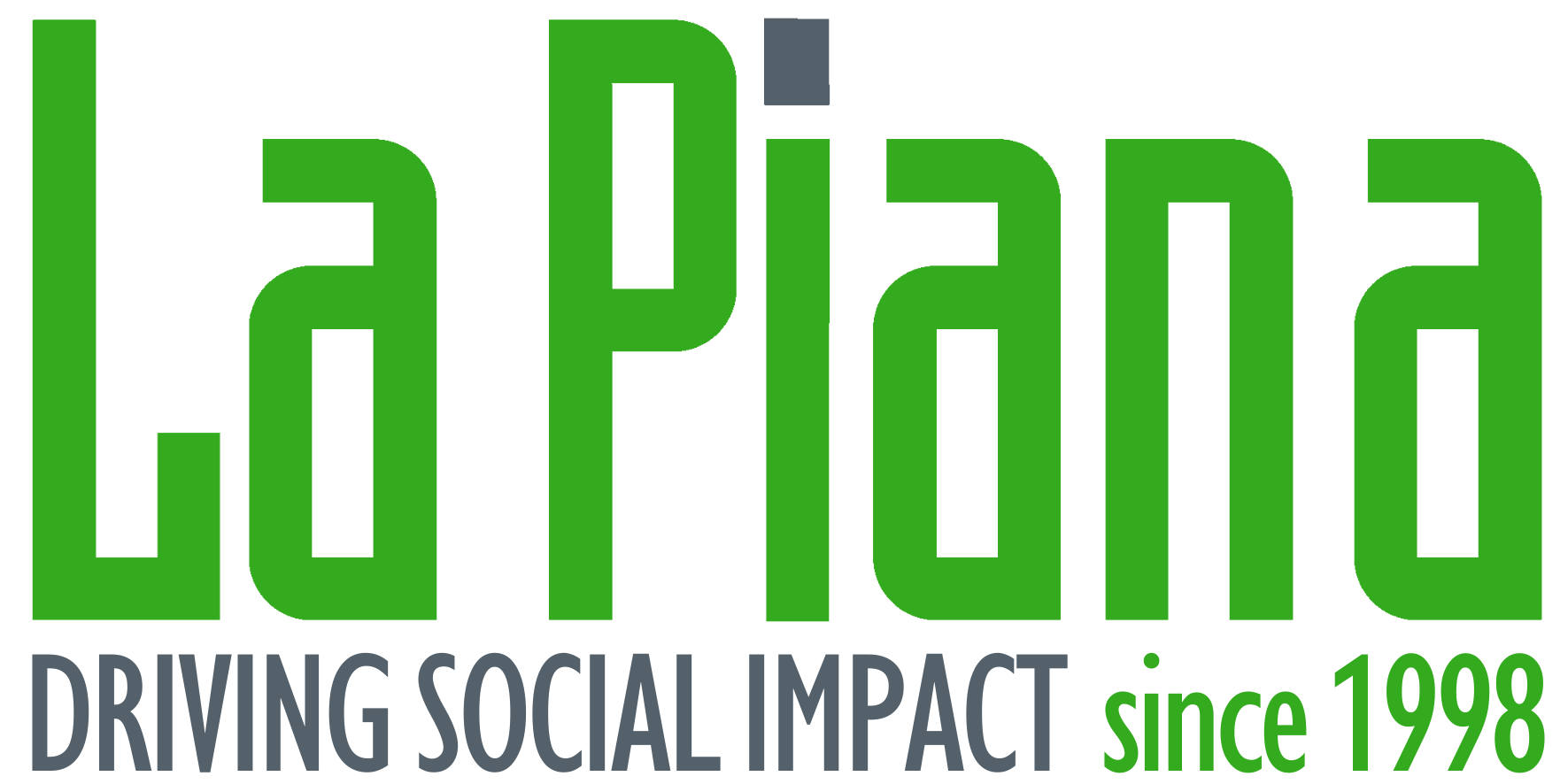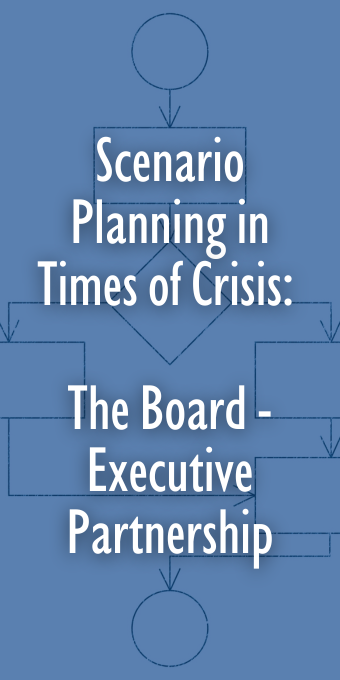Scenario Planning in Times of Crisis: The Board – Executive Partnership
Scenario planning is a form of strategic planning that recognizes the future is uncertain and to a large extent unknowable in advance. It enables organizations to envision multiple possible future environments and develop responses to each. Unlike traditional strategic planning, which too often relies on extrapolation from linear projections (e.g., fundraising will grow by 2% a year or inflation will average 3% for the next five years), scenario planning acknowledges uncertainty and prepares organizations for a range of possible futures.
Scenario planning is especially useful in times of great unpredictability. Thanks to the chaos brought by the new Administration, 2025 is shaping up to be the most uncertain time in living memory. This is true for the planet, the international community, the country, and yes, also for your nonprofit. As we support our clients through this work, we see organizations considering increasingly dire “worst case” scenarios – which often means that organizations need to grapple with existential and strategic choices. While the board and the executive director play distinct but complementary organizational roles, their partnership and alignment in this process is crucial. This is truly a time when standing together is an absolute necessity for organizational survival.
The Board’s Role in Scenario Planning

- Risk Assessment: Board members should bring their diverse expertise to help identify key political, financial, and operational risks associated with the federal onslaught, from funding threats to outright attacks on the organization or its entire field. The risk is real — to our democracy, and to your organization and its constituents.
- Strategic Decision-Making: Boards should guide and approve contingent strategies developed through scenario planning, considering various external factors. For each scenario, outline strategic responses that align with the organization’s core values and mission. Evaluate and rank strategic options based on their feasibility, impact, and alignment with organizational priorities. Ensure that contingency plans are in place for high-priority initiatives.
- Governance and Oversight: The board is responsible for ensuring that scenario planning aligns with the organization’s mission and long-term sustainability, always considering its core Must Do’s, Won’t Do’s, and Might Do’s. It does no good if the organization develops a survival strategy that abandons its core mission.
- Financial Stewardship: Boards must ensure that the organization maintains its financial resilience, including diversifying revenue streams and closely monitoring financial health. Creating the financial reports and monitoring metrics is a staff role, while reviewing the results is the board’s role. Both should work together to strengthen the organization’s adaptability and financial sustainability.
- Advocacy and External Relations: Board members can play a pivotal role in advocating for policy changes, engaging with funders and legislators, connecting with legal actions undertaken by others, and expanding the organization’s network to mitigate risks
The Executive Director’s Role in Scenario Planning

- Operational Leadership: The E.D. is responsible for integrating scenario planning into day-to-day management and ensuring staff alignment with strategic priorities. This has always been a big challenge, but in today’s environment, it is both critical and extremely difficult, given the drastic and unpredictable nature of the Administration’s actions.
- Communication and Transparency: Open dialogue between the board, the E.D., funder and other stakeholders fosters trust and ensures alignment. The E.D. must foster transparent communication about financial risks and potential mitigation strategies. Nonprofits should root their messages in strategy, communicate quickly and honestly, and tailor messaging to different audiences Remind everyone every day: We’re all in this together.
- Engaging Staff in Scenario Planning: The E.D. should involve key staff members in scenario development to ensure buy-in and practical execution of strategies. Staff will also take comfort in working for an organization that is trying to get out in front of these attacks.
- Implementation of Contingency Plans: While the board approves the strategic direction, the E.D. must operationalize these plans and ensure their feasibility. This is a difficult task, and plans may need to be continually revised as conditions change, and potentially worsen.
- Monitoring and Adaptation: The E.D. must continually assess external developments and adjust strategies accordingly, keeping the board informed of necessary shifts.
In an age of chaos and unpredictability, scenario planning is not merely a strategic exercise but a vital leadership function for nonprofit boards and executive directors. By working in tandem to anticipate potential challenges and prepare adaptive strategies, they can navigate uncertainties with greater confidence and continue to fulfill their missions. Through proactive governance, operational leadership, contingency planning, and transparent communication, nonprofits can develop resilience against unprecedented threats and build long-term sustainability.


Comment section